Every new iMessage feature coming to your iPhone in iOS 18
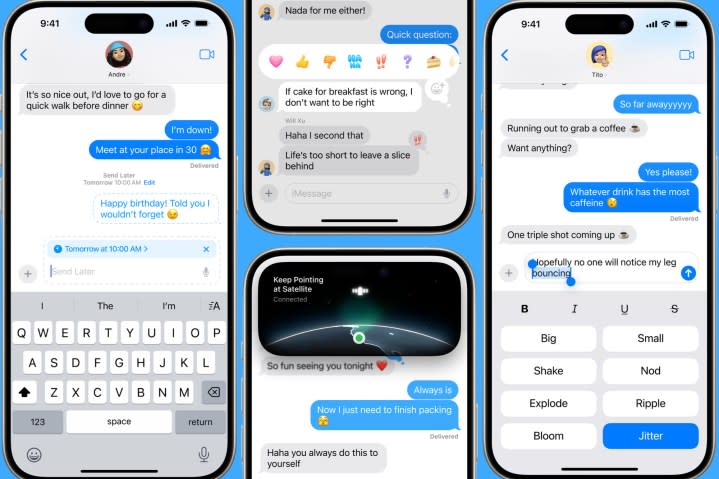
During Apple’s recent Worldwide Developers Conference (WWDC) 2024 keynote, Apple unveiled iOS 18 and its extensive new features. One area that will undergo significant changes is the Messages app.
The Messages app is no stranger to anyone with an iPhone. It’s been on the iPhone since the first model in 2007, is home to all of your iMessage conversations, and also helps you keep in touch with Android users via SMS texts. Now, iOS 18 is going to overhaul it with some fairly big changes, all of which we’ve outlined below.
Scheduled messages
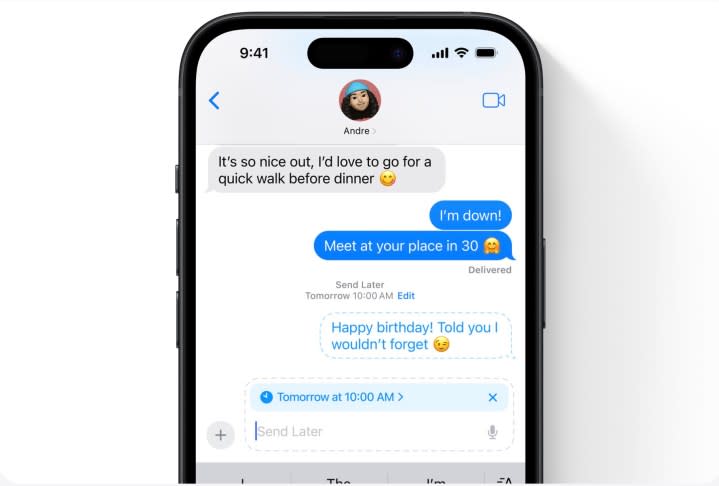
One of the best new features in the iOS 18 Messages app is the ability to schedule messages to be sent later, a feature previously only available in the Mail app. It might be sensible to postpone sending a message for several reasons. For example, you might want to avoid interrupting the recipient late at night or during their work hours. It could also be a situation where the recipient is in a different time zone, and you want the message delivered at a more appropriate time.
Another reason to delay a message is to give yourself time to review and revise it, if necessary, before sending it. Scheduling it for later allows for a cooling-off period and the opportunity for a final review. You can also edit and delete scheduled messages at any point before they’re sent, giving you plenty of flexibility.
Delaying messages is particularly useful for reminders that are best seen later in the week. For instance, if you’re hosting a party on Saturday and want to remind your guests on Friday not to forget, but today is only Wednesday, delaying the message can help ensure it is sent at the right time.
Finally, scheduling messages ahead of time is a great way to draft special messages, such as birthday wishes. For example, you can plan and create scheduled messages for everyone with a birthday next month and have them sent on each recipient’s big day.
New text formatting options
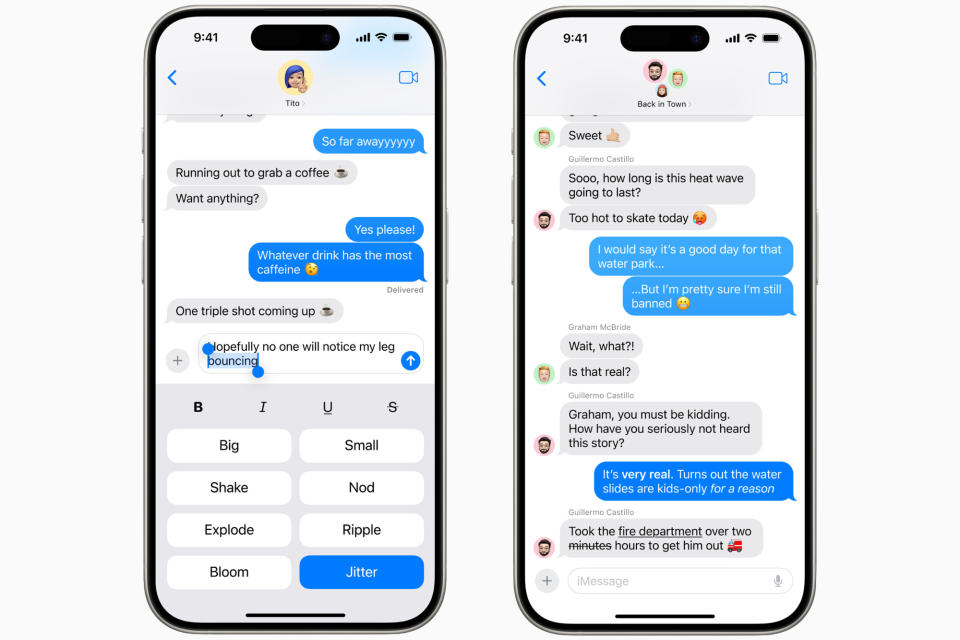
Over the years, Apple has added tools to make everyday texts more creative, and iOS 18 adds even more features to make each of your messages distinct.
You can bold, italicize, underline, and strikethrough words in the Messages app with iOS 18. You can also apply animated effects to any letter, word, phrase, or emoji. For example, you can make content appear bigger or smaller, or have it “explode” or “nod,” and much more.
Perhaps even better, you will receive recommendations on which effects to use based on the words in the message you’re typing. These formatting options are housed in a new menu (seen above), making it quick and easy to apply these effects whenever you want.
Tapback is better than ever
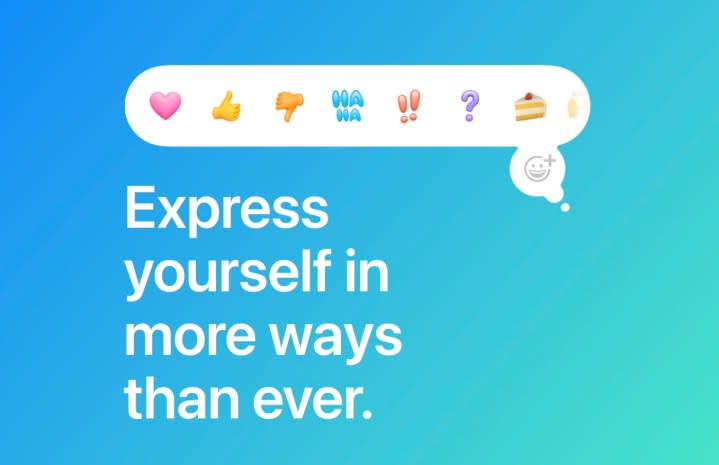
Tapbacks are a great way to react to a message quickly. Unfortunately, in the current form, Tapbacks are limited to sending just a few emoji like a thumbs-up or thumbs-down, haha, heart, or exclamation point.
In iOS 18, Apple is making Tapbacks even better by adding the ability to add any emoji or sticker. You can even use Live Stickers that you can design using your photos and favorite sticker packs. The Messages app will also keep track of your favorite Tapbacks, making them easier to find and use later.
Messages with satellite
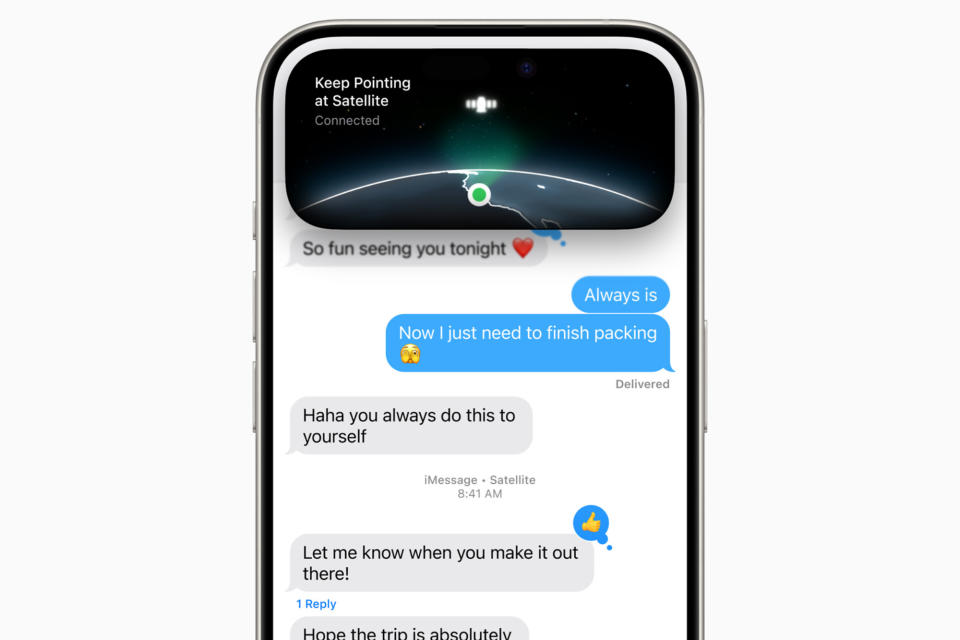
Sending messages is a great way to reach out to someone quickly. However, your messages won’t be delivered if you don’t have a Wi-Fi or cellular connection. With the release of iOS 18, if you have an iPhone 14 or later, you can send messages even without Wi-Fi or cellular connectivity.
In these situations, satellite capabilities will be used. You can still utilize all the critical features of texting someone on iMessage, and it’s all done through end-to-end encryption.
Satellite messaging is included as part of the same system as Apple’s Emergency SOS via satellite services. Just like those services, you’ll get two years of satellite messaging for free at the time of activating your iPhone 14, iPhone 15, or iPhone 16 later this year.
RCS messaging support
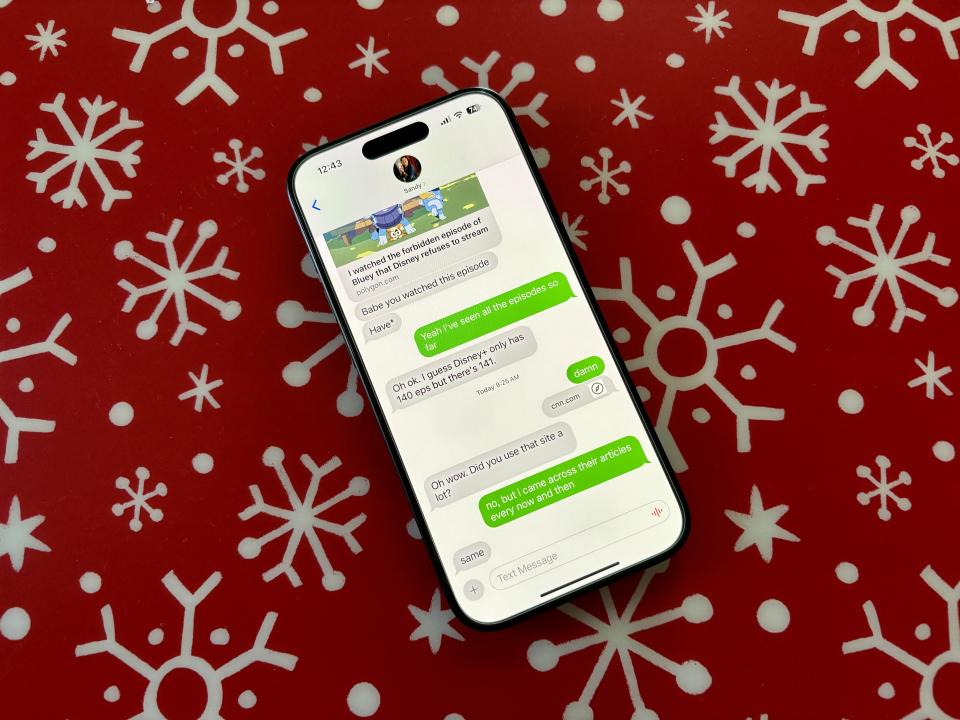
RCS messaging is also coming with iOS 18. It’s a long-awaited feature that allows iPhone users to send and receive RCS messages to Android users. RCS is a newer technology than SMS, offering improved media sharing and read receipts.
RCS conversations will still have green bubbles like SMS ones do today, but the experience will be a night-and-day difference. Thanks to RCS, you’ll be able to text someone with an Android phone and still get typing indicators, read receipts, high-res photo and video sharing, better group chats, and more.
Apple Intelligence
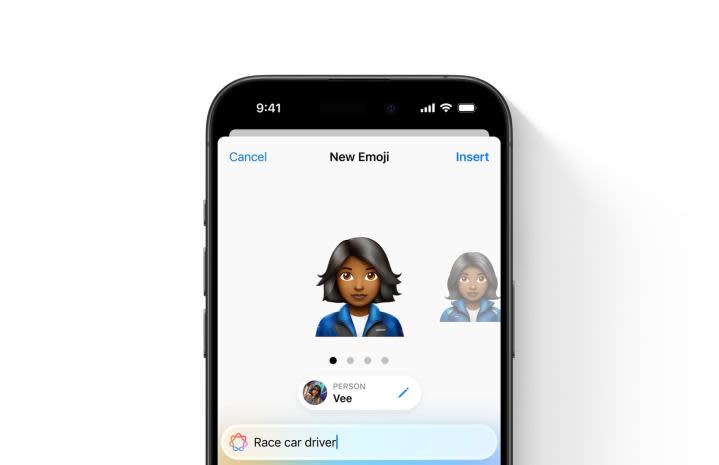
In addition to the features above, Apple Intelligence will heavily influence the Messages app in iOS 18. Apple Intelligence is the company’s version of AI and could potentially alter how we use our mobile devices going forward.
However, not all Apple devices will have access to Apple Intelligence, and it is unlikely to be available with the initial launch of iOS 18 this fall.
Once Apple Intelligence is available, it will introduce numerous new features that will change how we communicate with each other. One of these features is AI’s ability to suggest what to write to someone by analyzing previous messages and providing recommendations.
Aside from providing writing assistance, Apple Intelligence is also introducing “Genmoji,” a feature that allows AI to create new images based on a description, suggested concept, or even a person from your Photos library. Additionally, with Apple’s new Image Playground app, users can modify images using different ideas and styles. These images can be used in the Messages app and elsewhere to enhance your text or work.
The Messages app is changing in iOS 18. However, the features mentioned here also arrive on iPad with iPadOS 18 and Mac with macOS 15 Sequoia. Though most features will arrive in early fall, others, especially those relating to Apple Intelligence, could be delayed until the end of the year.


